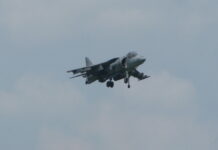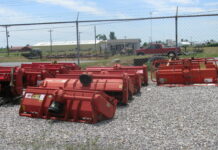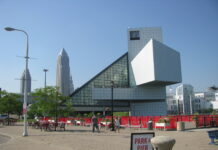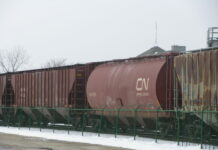Photo credit: DiasporaEngager (www.DiasporaEngager.com).
World events, including the US presidential election this year, are causing considerable anxiety within the Iranian regime, which is fervently preparing for this possibility by seeking to preserve its oppressive system and ensure a smooth succession from Supreme Leader Ali Khamenei to his son. Driven by Khamenei’s delusional ambition of expanding the Shia Crescent and challenging the global order, Iran is aligning itself more closely with China and Russia, further exacerbating its international isolation.
For Ali Khamenei and his heir, orchestrating a seamless transition after Khamenei’s demise to uphold the Islamic Republic’s doctrinal governance remains their paramount objective. This singular goal underscores the despotic nature of Iran’s religious leadership, which continues to lean heavily on China and Russia, while maintaining its antagonism towards the West, the United States, and Israel.
In the annals of political theater, few spectacles rival the farcical charade that are Iranian elections. As the nation gears up for yet another orchestrated display of “democracy,” the ruling clerical establishment’s sole objective remains the preservation of its iron-fisted grip on power, and the perpetuation of its archaic system of religious despotism.
The carefully curated slate of candidates, handpicked by the regime’s Guardian Council, is a motley crew of swindlers, fools, and stooges, each one a loyal servant to the regime’s interests.
Dissenting voices are swiftly disqualified, ensuring that the outcome is predetermined, a mere formality in the grand scheme of things. Voter turnout, whether high or low, is inconsequential to the ruling elite. Official figures are routinely inflated through a well-oiled propaganda machine, projecting an illusion of legitimacy to the outside world. The reality, however, is far more sobering, with genuine participation estimated to be a small minority of the electorate.
The candidates, meticulously vetted and selected by the Guardian Council, are predominantly from the Islamic Revolutionary Guard Corps (IRGC) or the Ministry of Intelligence. This selection underscores a continuity in Iran’s policy of militaristic and clerical dominance, with each candidate demonstrating unwavering loyalty to Khamenei’s overarching vision.
Former CIA director Michael Morell’s alarming assertion in Foreign Affairs that, “The U.S. is on the brink of facing a significant terrorist threat,” resonates deeply in this context. This narrative parallels the ignored warnings prior to 9/11, painting a foreboding picture of the consequences of underestimating the signals emanating from Iran. The regime’s persistent support for networks like the Islamic Resistance, amid preparations for a possible Trump presidency, highlights a steadfast commitment to its long-standing strategies of regional and global disruption.
The Reformist Mirage and the Public Discontent
Even the so-called “reformists,” once hailed as harbingers of change, have been co-opted into the system, pledging allegiance to Khamenei in a desperate bid to remain within the regime’s fold. Their promises of moderation ring hollow, as they too are mere pawns in the grand game of power, their aspirations for reform sacrificed at the altar of self-preservation.
As the protests of the past seven to eight years have demonstrated, the chasm between the regime and the people of Iran has grown ever wider. International isolation, coupled with the regime’s conflict with Israel and its support for terrorist groups across the Shiite Crescent, have further eroded its credibility and legitimacy.
Ali Khamenei, the self-proclaimed “Supreme Leader,” cuts a pathetic figure — a vindictive, narcissistic, performative, and delusional clown — clinging to the status quo with a desperation that borders on the absurd. His preferred choice for the presidency is likely to be a candidate from the ranks of the Islamic Revolutionary Guard Corps (IRGC) or the Ministry of Intelligence and Security (MOIS), further entrenching the regime’s authoritarian grip.
The next president will undoubtedly be chosen from among the candidates from the IRGC or the Ministry of Intelligence, as the IRGC is adamant about not weakening its Islamic terrorism network (Islamic Resistance) in any way. The regime has drawn its swords; it has no intention of compromising. The presidential debates in Iran are set to be broadcast on the regime’s television networks shortly. It’s important to note that the primary audience for the candidates is not the Iranian public, but rather Khamenei himself. The candidates are keen on winning his favor by any means necessary.
As Iran seemingly transitions towards a junta-like regime, the ten critical aspects defining this shift include military dominance, authoritarian mullah rule, heightened suppression of opposition, centralized power, drastic curtailment of freedoms, rigorous control of information and censorship, utilization of military force, mafia-style economic dominance, rampant human rights violations, and continued international isolation.
The Path Forward: Regime Change or Perpetual Oppression
It is vital to recognize that both the regime’s hardliners and the so-called moderates are merely two sides of the same coin, endorsing suppression, terrorism, and propaganda. The prevailing discourse of regime change significantly outweighs the rhetoric of electoral participation in this authoritarian theatre. The Iranian populace, largely indifferent and disenchanted, seeks alternatives beyond the stagnant and unyielding dichotomy of reformists and hardliners. The regime’s quest is self-preservation, but Iranian society has already moved beyond both factions.
As Iran teeters on the brink of becoming a full-fledged military junta, the writing is on the wall — the regime’s stranglehold on power, its suppression of dissent, its control over information and censorship, its human rights violations, and its international isolation are all hallmarks of a system that has long since lost its legitimacy.
The discourse of “overthrowing and regime change” has become the rallying cry for a populace that has grown weary of the empty promises and hollow rhetoric of the ruling elite.
Still, as the Iranian regime remains in power — and grows more desperate — this increases the threat against the US and the West. The regime in Tehran will continue to use terrorism and its military proxies to sew chaos in the region, and ensure it always comes out on top.
It is time for the world to recognize that the path forward for Iran lies not in the perpetuation of the farcical charade of dictatorial rule, but in the embrace of genuine democratic change, one that respects the will of the people and restores their fundamental rights and freedoms.
As the world watches, the imperative for recognizing and addressing the true challenges posed by Iran’s strategic maneuvers becomes not just necessary, but urgent.
Erfan Fard is a counterterrorism analyst and Middle East Studies researcher based in Washington, DC. Twitter@EQFARD.
Source of original article: Erfan Fard / Opinion – Algemeiner.com (www.algemeiner.com).
The content of this article does not necessarily reflect the views or opinion of Global Diaspora News (www.GlobalDiasporaNews.com).
To submit your press release: (https://www.GlobalDiasporaNews.com/pr).
To advertise on Global Diaspora News: (www.GlobalDiasporaNews.com/ads).
Sign up to Global Diaspora News newsletter (https://www.GlobalDiasporaNews.com/newsletter/) to start receiving updates and opportunities directly in your email inbox for free.






























